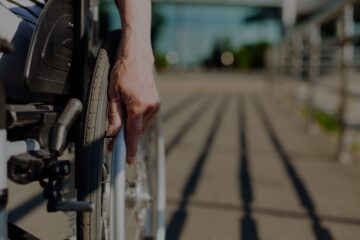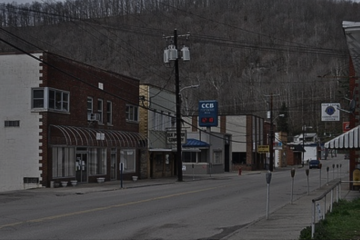By Erin Beck, Writing for the “When All Are Counted” Project
I no longer see COVID testing stations around the state, helping us keep better track of COVID cases. But last week, the West Virginia Department of Health and Human Resources reported the COVID deaths of a 70-year-old female from Kanawha County, a 96-year-old female from Kanawha County, and an 83-year-old male from Marion County. And it’s still true that West Virginians are older and sicker, making us more susceptible to disease, even if they aren’t tested for COVID when falling ill.
And in online communities, I’ve found people who are immunocompromised talking about the disillusionment they’ve developed as they’ve become the only ones still taking COVID precautions, and other people with long Covid seeking to bring attention to their existence as COVID fell off many other people’s radar.
Federal officials declared the COVID-19 public health emergency over on May 11. But in an effort to find out what effects COVID is still causing in West Virginia, I set out to find people still taking COVID precautions, as well as those with long COVID. I also reached out to hospitals and to the DHHR. I ran into several hurdles, but here’s what I could find out.
Sally Roberts, of Morgantown, had COVID this month for about two weeks. Although she suffered from fatigue, a sore throat, congestion, coughing, and high fever, she thinks her case would have been more severe if she wasn’t fully vaccinated.
“I will be one of the first in line for the newest COVID vaccine this coming fall,” she said.
Because she has asthma, which can increase risk, she was continuing to take precautions. She had continued to mask and believes she probably caught it at a conference where she took her mask off occasionally – for example, for pictures. She’s back to masking now, although she noted that few others are.
“People are still going out and about and sneezing and coughing, kind of with impunity,” she said. “And it really places people who are immunocompromised at high risk because the rates of COVID are going back up again. We always have new strains circulating. And I think it’s just common courtesy to others that if you do feel that you might have a cold or might be feeling a little off that you wear a mask just to keep other people safe.”
She said people give her a “funny stare” now and then, although it doesn’t bother her because she knows she’s taking care of her health.
“I know other people feel very out of place when they’re the only person with a mask on,” she said. “And sometimes, I will admit there are times I feel like I wish I could just go without a mask and be my regular old self again. But I don’t think it’s safe. And I think I just got reminded that it’s not completely safe to do so.”
The federal Centers for Disease Control and Prevention noted when declaring the public health emergency over that while it would still track trends in hospitalizations and deaths, the number of cases would become more difficult to collect and “increasingly unreliable as some states and jurisdictions may no longer collect case data, testing results are sometimes not reported, or some individuals skip testing all together.” Additionally, laboratories that test samples for COVID would no longer be required to report those results to the CDC.
But while case count data is slippery due to limited testing, Jessica Holstein, DHHR spokeswoman, noted that DHHR reports to the CDC, on a weekly basis, the presence of SARS-CoV-2, the virus that causes COVID-19, in wastewater samples at multiple sites. Most sites, especially those in Jefferson and Putnam, show sharp recent increases.
National news outlets have said the rapidly spreading EG.5 subvariant of COVID is milder. But cases continue to increase nationwide – a 21.6% increase in hospitalizations in the last week and an 8.3% increase in deaths in the last week. National news outlets have pointed out that numbers have still been low compared to the last three years, but the last week of hospitalizations (12,613 people nationwide) is roughly the same as admissions in late June of 2021, just prior to the Delta surge, and the virus continues to mutate, and new strains can be more contagious or more harmful.
Sally worries about other immunocompromised people.
“I recommend that everybody continue to test because it is out there,” she said. “And although you may not get a bad case of it, if you find out you’re positive, it’s really important to stay away from other people if you can. And if you can’t, at least mask so that you’re not spreading as much of the virus around.”
I also spoke to another one of the few who is continuing to take stringent precautions. One woman, who worked as a state employee who asked not to be named, is immunocompromised and has several other health impairments.
She worked remotely for a while but left her job because she was concerned about her safety.
She continues to mask, although her husband sometimes masks first to encourage her to do so.
“It’s a sweet thing,” she said. “But yeah, there are days when I just want to go into Walmart for five minutes, unmasked. And I usually don’t.”
Sometimes, she feels like, “I want to be normal today.”
She goes to doctor’s appointments; a monthly outing, such as a trip to a store; and has visited family a couple of times. But outings with friends have had to be postponed because friends were ill. While she has been vaccinated, she worries about long COVID and about catching COVID while having a compromised immune system.
And others are currently dealing with symptoms of long COVID.
One man, who asked to go by his middle name Brian for professional reasons, said about a year and a month after a COVID diagnosis, he’s still suffering from fatigue as well as lightheadedness when he stands up.
He said he had taken precautions, noting he is 73 and about 20-25 lbs overweight. During his about 14-day experience with COVID, he experienced respiratory problems and a mild fever.
Now, it takes him more energy to get up in the mornings, and he gets tired earlier in the workday. His doctor hasn’t prescribed anything for the lingering symptoms, although the doctor did say the symptoms are consistent with long COVID.
He said, “It’s a little discouraging. It’s been a year and a month; it doesn’t seem to be getting any better.”
Long COVID can be considered a disability under the Americans with Disability Act if it substantially limits a major life activity, according to the U.S. Department of Health and Human Services.
But according to a DHHR spokeswoman, the department doesn’t collect long COVID data, although she noted the agency is still tracking COVID deaths.
DHHR spokeswoman Jessica Holstein said emergency room data on the state’s COVID-19 online dashboard now comes from syndromic surveillance, which is data “collected before cases are diagnosed or laboratory results are confirmed,” according to the CDC.
“Now that the federal COVID-19 public health emergency has ended and statewide hospitalization levels are low, DHHR has discontinued publication of hospitalization data,” she said. “COVID-19 hospitalization data can still be viewed at https://covid.cdc.gov/covid-
One man, who works in a hospital intensive care unit and asked not to be named, told me he has noticed that older patients coming back to the ICU with heart and lung complications are more likely to have previously had COVID diagnoses, although he hasn’t seen anyone die from COVID recently. This started happening about seven months ago, he said.
The CDC is researching post-COVID conditions, and sending people back to the hospital.
I reached out to several hospitals to learn more about return patients who previously had COVID diagnoses and their current levels of long COVID and COVID patients. But I was only able to get limited information back.
According to guidance for hospitals, the CDC still requires reporting of people who are hospitalized with confirmed COVID, but not for suspected COVID.
Dr. Mark Povroznik, Vice President of Quality and Chairman of Infection Control at United Hospital Center in Bridgeport, said, “We still submit number of patients with confirmed COVID or patients under investigation. We have seen an uptick, but not affecting bed capacity, supplies, or staffing.”
In response to a question about whether the hospital is seeing an increase or decrease in patients with COVID, Dale Witte, Charleston Area Medical Center spokesman, said, “We are not having an increase above baseline at this time. Our numbers are low compared to the height of the pandemic.”
As for ICU patients, he said, “The trend is still our sicker patients are: those unvaccinated or last dose >1 year, patients who are immunocompromised and older patients.”
CAMC is still isolating patients with symptoms, he said.
So, while COVID is still creating problems in West Virginia, with less testing and data collection, we lack the full picture. That said, I’ll continue searching for more information on this topic for future stories. And I’ve sincerely enjoyed working with Think Kids, but this is my last piece for this project before I begin a new endeavor.
Thanks for reading!

Erin Beck is a writer, journalist, and native West Virginian. She grew up in Doddridge and Ritchie counties, then earned a bachelor’s degree in journalism. Her work has appeared in the Charleston Gazette-Mail, Mountain State Spotlight, The Register-Herald, and several other West Virginia publications.



0 Comments